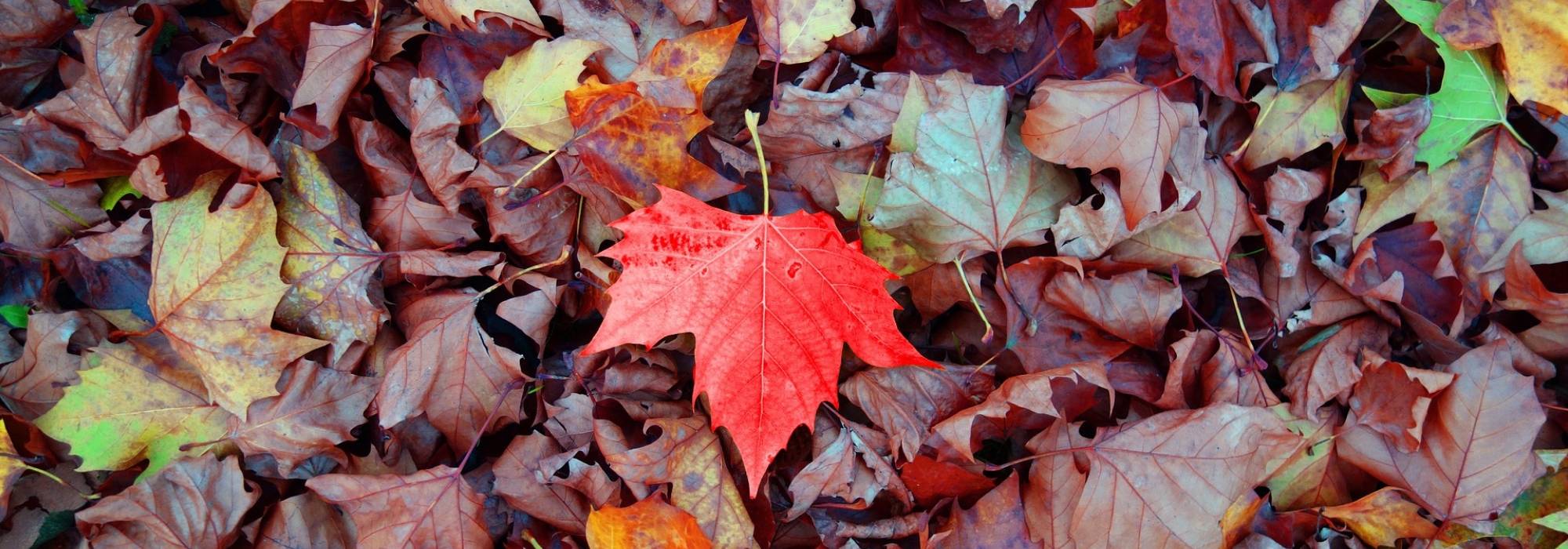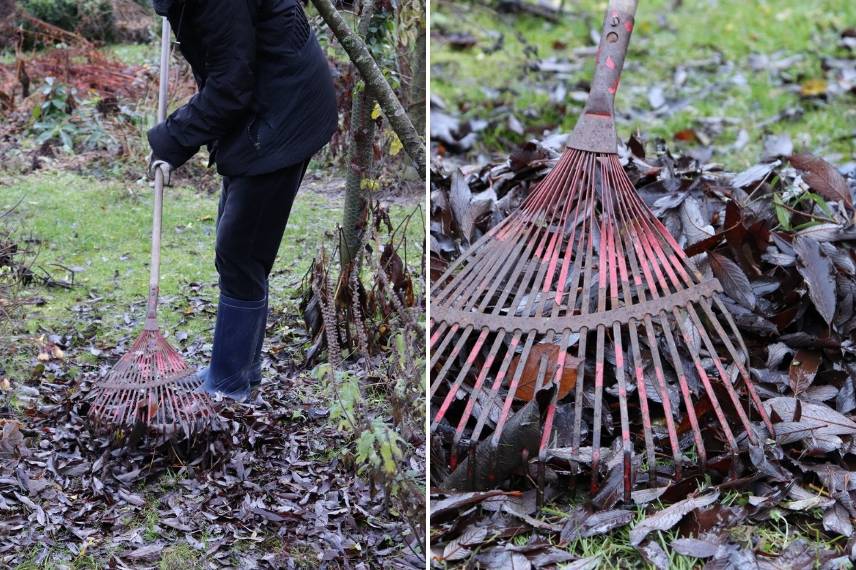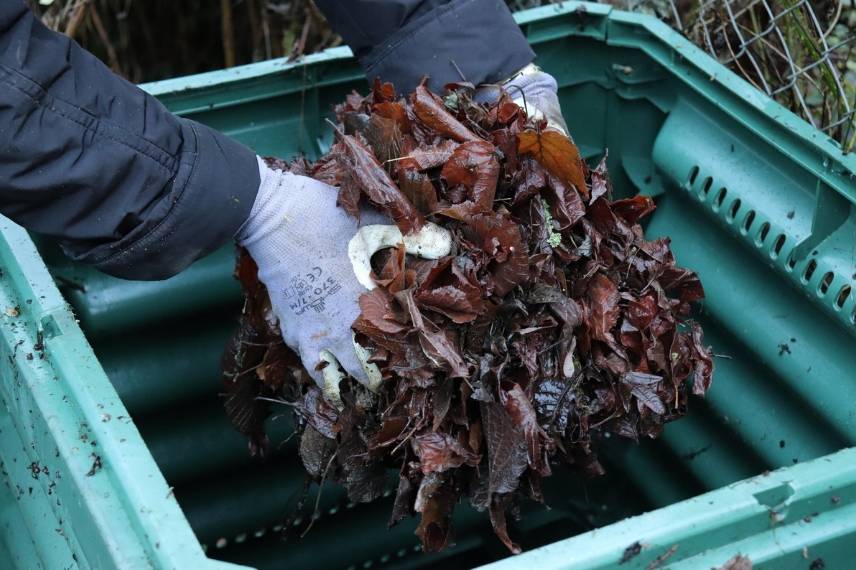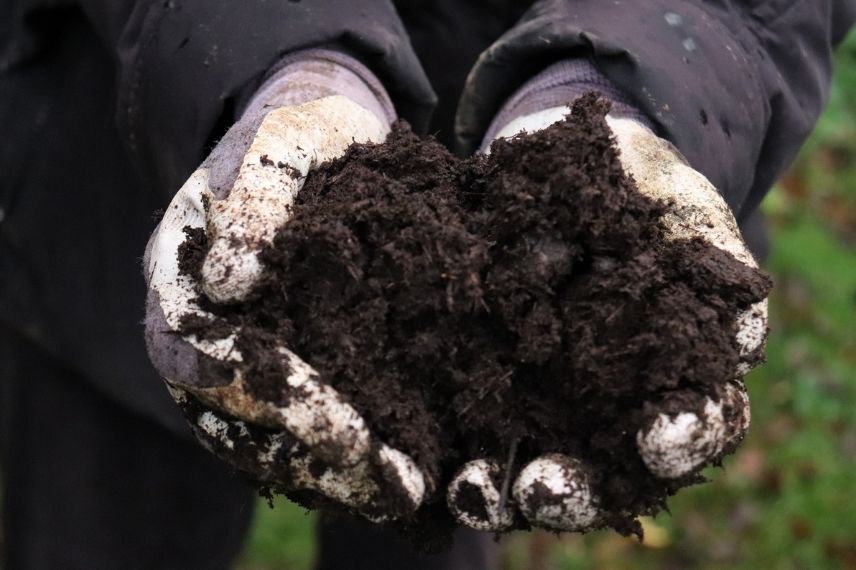
How to make good leaf mould? - tutorial
Composition, uses and advice
Contents
In autumn, there is no shortage of leaves… Conscientious gardeners who rake patiently know it well! But once gathered, what to do with fallen leaves? Don’t throw them away: they are a wonderful free resource that can be used as mulch and can also be used to make top-quality leaf mould, with a little patience.
Discover our explanations and tips to create your leaf mould easily!
What is leaf mould?
Leaf mould is a growing medium produced by the decomposition of dead leaves from various species of trees and bushes. This decomposition produces humus which helps improve soil structure. It is rich in organic matter but poorer in nutrients than a conventional compost.
Composting time varies between 9–10 months and 2 years depending on what you want to obtain and depending on the essential oils used. A 9–10-month leaf mould will be coarser than one matured for 2 years. The greater the ripeness of the mould, the finer it becomes and the more optimal its qualities.
Composition of leaf mould :
Leaf mould contains :
- 0.5 to 0.8% nitrogen
- 0.1 to 0.3% phosphorus
- 0.1 to 0.7% potash
(Source: “Composts and mulches” by Denis Pépin, Terre vivante editions)
Its pH ranges between 6 and 6.5. It is therefore slightly acidic.
Read also
How to choose good compost?What is leaf mould used for?
Leaf mould can be used to :
- be incorporated into border soil or vegetable plot or at base of hedges,
- be mixed with garden soil then sieved for sowing, repotting or propagating.
Pure leaf mould is an excellent growing medium. More acidic than standard compost, it is ideal for acidophilous plants: camellia, rhododendron, heather, blueberry, etc.

It is used :
- pure for sowing in seed trays of plants destined to be pricked out in garden or vegetable plot and for taking cuttings,
- mixed with well‑rotted compost (90% leaf mould – 10% compost) for pricking out into buckets, before transplanting to garden,
- mixed with ripe compost (2/3 leaf mould – 1/3 compost) for repotting potted plants (houseplants, balcony geraniums, etc.),
- in borders to improve soil structure by producing stable humus.
How to make leaf mould?
To make your leaf mould, you will need :
- dead leaves: oak, birch, hazel, ornamental cherry… Feel free to shred those with a rigid petiole such as liquidambar, plane tree or tulip tree. However, avoid leaves rich in tannic acid (sweet chestnut, walnut) or incorporate them sparingly.
- a composter, a silo made with wooden stakes and chicken wire or, failing that, a simple shady spot at the bottom of the garden; however birds and hens (if you have any) tend to rummage through the pile and scatter the leaves.
Method:
- In autumn, on an overcast, damp and windless day, collect dead leaves!
 To do this, use a lawn broom, very handy on gravel paths. Make piles on the lawn then run the mower on a high setting over them. The dead leaves end up shredded in the collection box, with a little herb. This provides nitrogen and achieves a good carbon/nitrogen balance.
To do this, use a lawn broom, very handy on gravel paths. Make piles on the lawn then run the mower on a high setting over them. The dead leaves end up shredded in the collection box, with a little herb. This provides nitrogen and achieves a good carbon/nitrogen balance. - First place a layer about 20–30 cm of leaves in your container or where you want to make your leaf mould.

- Add some grass clippings, nettles or comfrey (fresh or as weak plant extracts). These are natural compost accelerators. You can also add poultry droppings or manure.
- Add pre-composted horse manure, compost or, failing that, garden soil.
- Replace with another layer of dead leaves, grass clippings and so on.
- Turn the pile in spring, about six months later, with a digging fork.
- Water if weather is dry, even in winter (unless it freezes).
- It will take another year or even two to refine the leaf mould.

My tip :
As a precaution, do not use leaves from roses or fruit trees that could carry diseases. Temperatures reached during composting may be too low and for too short a time to eradicate all traces of pathogenous elements.
It is important that the leaf mould remains in contact with soil at all times so it is in contact with the soil fauna that contribute to decomposition.
- Subscribe!
- Contents
































Comments